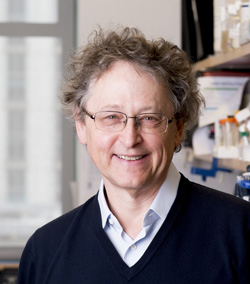 Dr. Ole Søgaard
Dr. Ole SøgaardOne of the most widely studied approaches to curing HIV is often referred to as “kick and kill”. The name refers to the two prongs of the strategy, namely “kicking” the virus out of its latent state by making infected cells produce virus, then killing the infected cells. Although spurring infected cells to produce HIV sounds counterintuitive, it is not until a cell is actively producing virus that the immune system can identify which cells are infected and initiate efforts to eliminate those cells.
Researchers have identified a broad array of agents that might act as latency reversing agents, or LRAs, and several clinical trials have provided evidence that they can to some extent kick the virus. The most promising evidence that LRAs can result in virus production was reported by amfAR grantee Dr. Ole Søgaard of Aarhus University Hospital in Denmark at the 2014 International AIDS Conference. He and colleagues used the cancer drug romidepsin and reported that after each dose, there was an increase in the amount of virus in the blood.
But despite initial hopes, the “kill” part of the strategy has proven more elusive. A series of test-tube experiments conducted by amfAR ARCHE grantee Dr. Robert Siliciano and his colleagues predicted that reversing latency would not be enough to result in the death of infected cells. Unfortunately, this failure to kill has been borne out in clinical trials, including Dr. Søgaard’s.
 Dr. Michel Nussenzweig
Dr. Michel NussenzweigResearchers generally believe that the immune system is the most promising avenue for killing infected cells, and several different lines of investigation have been pursued, including therapeutic vaccines and boosted T cells. One of the most exciting new advances comes from the laboratory of Dr. Michel Nussenzweig at the Rockefeller University in New York City. Rather than therapeutic vaccines or T cells, Dr. Nussenzweig and his collaborators are testing monoclonal antibodies, a type of immunotherapy used to treat autoimmune diseases and cancers.
Dr. Nussenzweig and other research groups have identified particularly potent antibodies that can neutralize a broad genetic range of HIV viruses. In addition to targeting virus particles themselves, Dr. Nussenzweig’s team is also particularly interested in another function of antibodies, namely antibody-dependent cellular cytotoxicity (ADCC) that can target and kill virus-infected cells. Their work culminated in a demonstration that in mice, a combination of LRAs with an antibody called 3BNC117 can result in the apparent elimination of infected cells.
Encouraged by these results, amfAR assembled a team of researchers including Dr. Søgaard and Dr. Nussenzweig to conduct a clinical trial to test whether a combination of romidepsin and 3BNC117 can eliminate infection in people with HIV, or at least reduce the number of cells harboring the virus. An amfAR grant of $1.5 million was awarded to the team in February 2015. Patients will be enrolled in the United States, Denmark and Germany, with results expected in 2017.